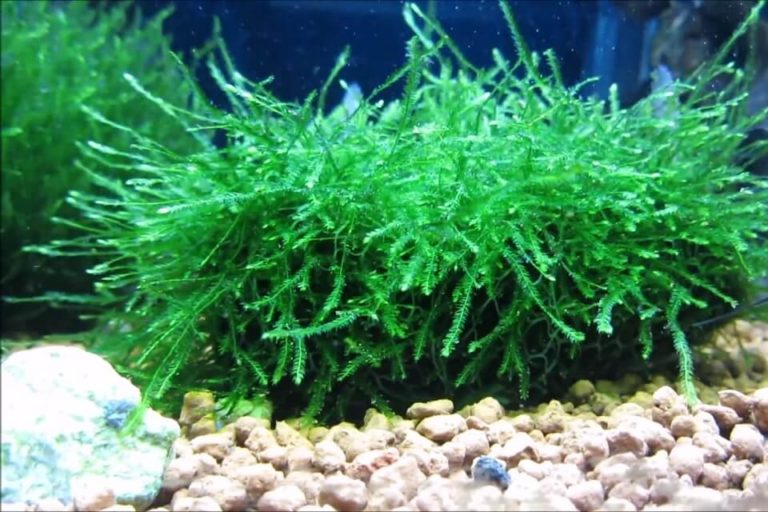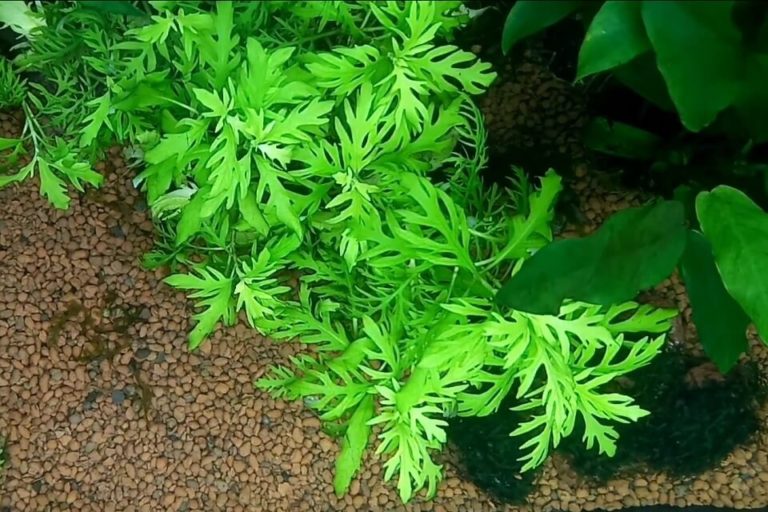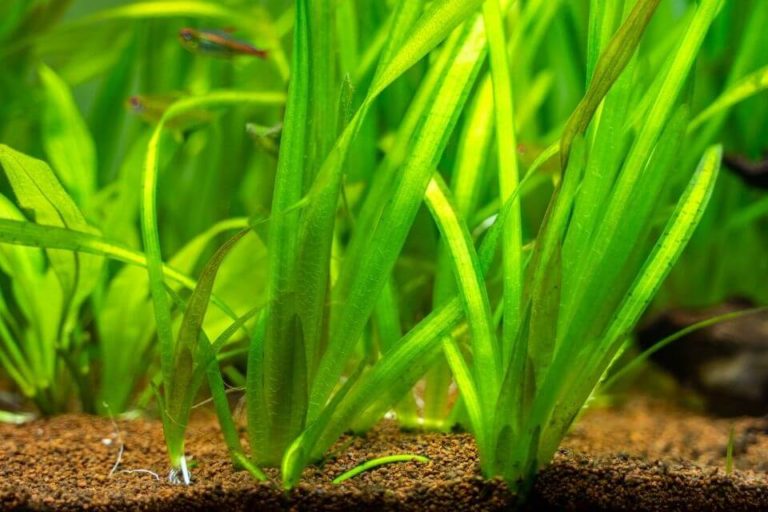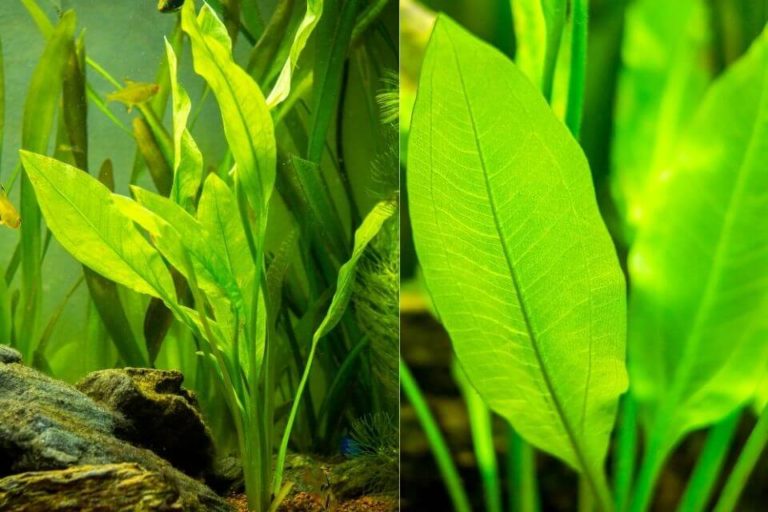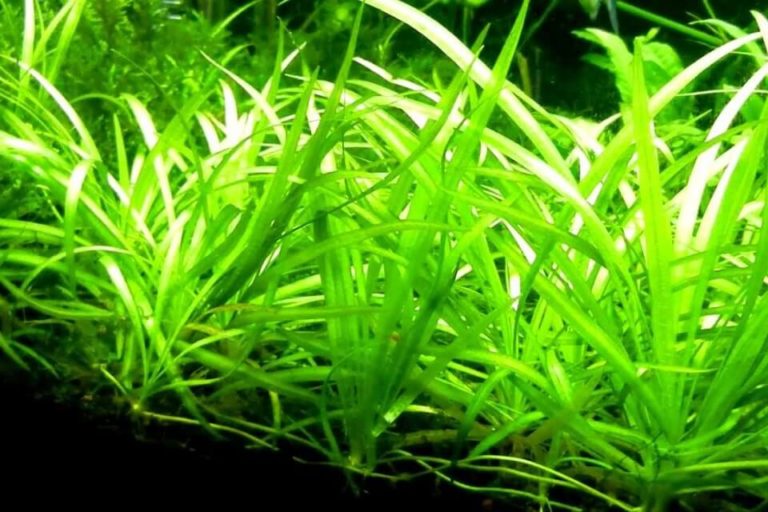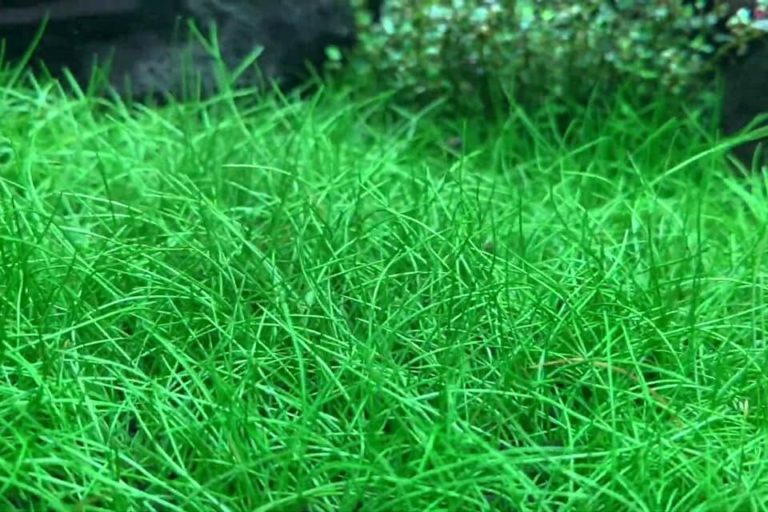Red Root Floater Care: Tank Size, Propagation and Planting
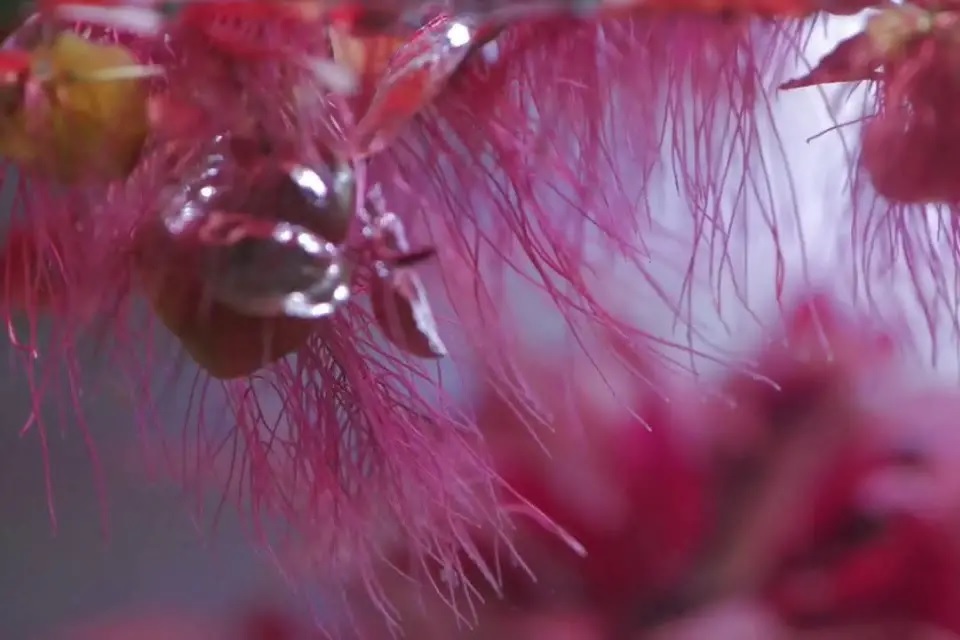
Red Root Floater is a fascinating aquatic plant that is popular among aquarists. They are relatively easy plants to care for, but there are a few things to keep in mind.
In this care guide, we will cover everything you need to know about keeping red root floaters healthy, useful, and aesthetically pleasing to the eye.
Overview Red Root Floater
Red Root Floaters can be described as small floating ferns. If you let the red root floater plants grow freely without any type of unnecessary prevention, these plants usually grow to cover the surface of the entire tank.
Also, whenever you decide to do so, these plants will not only block out the light that comes from below but also assists in preventing algae growth.
The red roof floaters can also serve a wide range of functions, including helping to remove contaminants and biological waste from the water in your tank.
It is also important to keep in mind that red root floaters tend to take over all of the space on the tank’s surface. So, you may want to give other plants a little more room by periodically removing some of the red root floaters from the bottom.
This way, you can keep the number of red root floaters inside the tank from blocking out too much light. The extra light is good for other plants so there needs to be an appropriate balance in order to keep the plants healthy.
Benefits Of Red Root Floater In A Tank
There are many benefits to keeping red root floaters in a tank. These plants can help to block out light, remove contaminants, and act as a filter.
Additionally, they can serve as a nuisance algae eater and help to maintain a healthy tank. When cared for correctly, these plants can provide many years of enjoyment.
Also, beyond the aesthetically pleasing looks, the smaller shy fish can use the red root floaters as a shield from larger fish in the tank.
For instance, whenever the larger fish get too close, the smaller fish will swim in between the red root floaters in the tank to protect themselves. Therefore, if you have small fish in your tank, you can improve their chance of survival.
The appearance of the Red Root Floaters Plant
When you are looking at the red root floaters in a tank, the look is normally initially deceiving. This is often because the surface of the tank may simply look like it is covered with beautiful delicate plants.
For instance, these plants may look like heart-shaped petite leaves that have distinct shapes. The color of these plants can also be quite remarkable in many aspects. This is mainly due to the fact that they are typically red in color.
However, when you view these plants from a closer distance in standard lighting, they will appear to be changing from yellow to light green based on the hue of the lighting.
On the other hand, if the tank is illuminated in high lighting, these plants will appear to be a bright and vibrant red. These changes in colors do not indicate a certain healthy state of these plants since these transitions are completely normal.
Additionally, whenever the water is not cloudy but pristine, you will notice that the plants in the tank look like tiny flowers. It is important to note that flower blooming is considered to be unique and beautiful in its own right.
Size & Growth Rate
Whenever red root floaters are taken care of in good water conditions, the growth rate for these plants can vary from moderate to high. So, they can spread very quickly if they are left alone. Therefore, if you are not really diligent in taking care of them, the surface of your tank may turn into a thick carpet of red root floaters. And, can easily catch newbie aquarists by surprise if they are not careful. In fact, one of the first things that a newbie aquarist should learn about the red root floater is to keep control by pruning them regularly and removing any dead plants.
The size of the red root floater is usually about 1 inch (2-2.5cm) long. However, the roots are usually thin and will only grow in thickness to about a millimeter.
Red Root Floater Care
Red Root Floaters do not need aquarium substrate and can grow on wet and muddied substrates. Most people prefer the decorative way it covers the surface of the tank.
They are easy to care for and only need to be placed on the water’s surface. When purchasing Red Root Floaters, you will receive 2-3 dime-sized plants with 2-3 leaves each.
-Tank Size
Even though the red root floater can grow in small tanks, they tend to grow faster in a tank size that is 5 gallons or larger. Actually, a 5-gallon tank is ideal and is highly recommended by many aquarists.
– Tank Setup And Substrate
As mentioned earlier, the red root floater does not need a substrate to grow on. You can place them on top of the water in the tank and they will grow well.
– Water Parameters
The red root floater plant is not picky about water parameters. However, these plants can benefit greatly from a high-quality filtration system and regular water changes.
These plants can be sensitive to fluctuations in water quality, so it is important to maintain stable conditions in your aquarium.
– Lighting
The red root floater can grow well under a variety of lighting conditions. For instance, if the lighting is low to high for about 6 to 8 hours a day, they can thrive well.
– Co2 And Fertilizer
The red root floater can grow well without co2 supplementation. Just like many other plants, however, it can benefit from supplementation like iron, and nitrogen, Seachem flourishes and flourish excel.
On the flip side, the red root floater does need some form of fertilization to grow and thrive well. For instance, you can add liquid fertilizer to the water regularly so that you can replenish the nutrients.
How To Plant Red Root Floater?
Learning how to grow this plant is relatively easy even for beginner aquarists. In fact, you can place these plants in more than one type of environment and they will thrive well, including the following options provided below:
- Aquariums
- Gravel
- Sand
Any of the above In either of these places, they will not have a difficult time growing. In fact, as long the water temperatures in these environments are mild and these plants receive plenty of nutrients like iron, aquarists can pick and choose which one is best for their needs and preferences.
Pruning And Trimming Red Root Floater
If you trim Red Root Floaters regularly, they will grow and develop much better. Also, because the process of trimming is so easy, aquarists may use more than one tank to do just that.
For instance, if the aquarists spread these plants between more than one tank, they keep one tank for themselves. And if they choose to do so, they may decide to sell the other healthy Red Root Floaters plant to someone else.
It is important, however, to remember to follow the proper trimming and pruning practices. Because it is a rosette plant, the leaves will emerge from its center.
Therefore, if you want to give this plant a chance to develop more robust instead of growing back smaller, you do not want to damage its leaves by cutting.
Red Root Floater Propagation
Just like other similar-type plants, the Red Root Floater is considered to be easy to propagate. And, there are several different techniques and methods that can be used to do it properly.
Yet, if you do your research, you will most likely find that the best stalk propagation is highly recommended over the other options.
Typically, to get started, it is best to cut the stalk of the plant between a root and a leaf cluster. Once the stalk has been completely removed, you should relocate it to a new tank.
Compatible Tank Mates
Finding the right tank mates for the red root floater is also easy. Because the red root floater creates an environment that benefits many different types of fish, you will find that there are some aquarium-friendly fish that you want to place in the tank with them right away.
This is primarily because this plant can serve a variety of functions, including providing shade and removing contaminants from the water. Here is a short list of those that will thrive well with the red root floater.
- Cherry shrimp
- Amano Shrimp
- Freshwater crabs
- Betta fish
- Platy fish
- Guppy fish
- Celestial Pearl Danio
- Ghost shrimp
Origin And Distribution
According to information published on Aquariumbreeder.com, the red root floater plant is indigenous to South America, particularly to the Amazon River Basin.
In these and other surrounding areas, the red root floater can be found on top of both stagnant and still waters. For instance, in these parts, aquarists may find green and red-tinged root floaters in South America.
Also, if you do your research, you may find that this plant has been seen in different parts of Central and North America.
Average Price For A Red Root Floater Plant
The average price for a red root floater plant usually varies based on a number of different factors. Therefore, if you are operating on a tight budget, you may want to shop around.
For instance, you may find red root plants for around $10 on Amzon.com Or eBay.com. You can search for this plant by more than one name, including the Phyllanthus fluitans.
Frequently Asked Questions
– Is Red Root Floater Easy To Grow?
The answer to this question is yes. In fact, it really does not matter if you are growing this plant in sand, in rocks, or in other places in nature, the results are usually the same.
Both beginners and veteran aquarists alike can use a variety of methods to ensure they grow properly. Also, if they choose to do so, they can grow these plants in aquariums as long as the temperatures are mild to moderate, from 70 F to 82 F.
Additionally, if you want to grow these plants at a relatively fast rate, you can feed them high levels of nutrients. For instance, you may want to start the process by adding iron sources to the water.
– Is Red Root Floater Good For Aquariums?
The answer to this question is yes. These plants are ideal to place inside aquariums for several different reasons and purposes.
For instance, if you want to make sure the water in your aquarium is filtered naturally by the plants that you place in your tank. For better performance, you can place red root floaters on the bottom.
These plants will not only remove contaminants from the tank but also help with getting rid of unwanted algae. You should also know that these plants grow fast so it will not take a lot of time for the surface of the water to be covered.
– Do Red Root Floaters Need Fertilizer?
Yes, the red root floater does need some type of fertilizer to thrive well in nature and in aquariums, too. One of the most essential is those that contain iron, especially since iron ensures the red coloration will be formed.
However, before you make your choice of products, you need to know which ones to avoid, and which ones are best to use. For instance, you should avoid fertilizers that contain excessive chemicals since they can cause these plants to quickly die.
– How Long Do Red Root Floater Roots Get?
The red root floater has the potential to grow about an inch in length. This is especially true if the aquarists are diligent about caring for these plants properly.
– Difference Between Red Root Floater Vs Frogbit?
The Red Root Floaters and the Frogbit plants are known for sharing similar characteristics. One of the most notable is the environment in which they are grown.
For example, these plants are often found growing in aquariums by both beginners and experts. Yet, there are also some distinct differences that everyone should know.
That said, here are a few examples of both similarities and differences between the two.
Similarities
- Both Grow and thrive well in similar environments
- Under the right conditions, they tend to grow very fast
- After they have been established, they can be described as hardy plants
- Tanks that have been disturbed can hamper their growth
Differences
- The Frogbit plant is known for having a faster growth rate
- The red root floater plant is not as adaptable in low light conditions as the Frogbit
- The red root floater has a lower tolerance for a wider range of temperatures than the frogbit plant
- The leaves of Frogbit are not considered to be water-repellent but the leaves of the red root floater plant are
Each of these common types of floating plants can be an excellent addition to virtually any aquarium. And, this is one of the primary reasons why some aquarists like to pair these two plants together in their tanks.
– Do Red Root Floaters Multiply?
Yes, red root floaters do multiply. The rate of their growth usually varies, however, based on the conditions and care that these plants receive.
For instance, if you want to see a thick carpet of leaves floating on the surface of your tank, you need to be diligent about the care and maintenance that you provide to these plants.
So, you want the conditions of your water to be good, including adding the appropriate amount of nutrients as required.
Conclusion
If you are thinking about growing red root floaters in your tank, you need to learn as much as you can about these plants.
Even though these plants are relatively easy to care for, there are still some specific things that need to be done to ensure that they thrive well in their environments.
You should also know how these plants can make a huge difference in the life of their tank mates. Specifically, as it relates to which types of fish can benefit most from their presence in the tank.
Since these plants usually serve as filters in the water (i.e. assists in getting rid of unwanted algae and other kinds of contaminants), fish types like guppy fish and platyfish normally make the best tank mates.
Additionally, if you decide to grow red root floaters in a tank, you need to become familiar with the right size tank and tank setup.
Once you know this information in detail, you can make sure that these plants grow to their potential in the healthiest environment possible.


